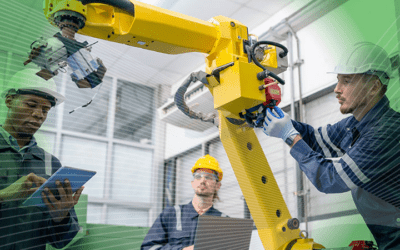Using Engineering Information to Achieve a More Efficient Service Delivery
In my previous blog, I wrote about the blindfold-challenge; sending a service technician into the field with impaired visibility on an installed product, scarce access to knowledge, and poor spare parts support. The challenge hit a nerve with many based on our...
Insights Into the Future of Field Service Management in 2024
Guest speaker, Forrester’s Kate Leggett shares perspectives on what we’ll see from field service in the coming year In a recent insightful podcast between Chis Wolff of PTC and our guest, Kate Leggett, VP, Principal Analyst at Forrester, the future of Field Service...
PTC Only Vendor Named a Worldwide Leader in Five Service-related IDC MarketScapes
In today's dynamic business landscape, selecting the right enterprise software solution is paramount to ensuring efficiency, productivity, and ultimately, success. One crucial factor that prospective buyers must consider is the scope of capabilities offered by each...
Why Your Service Data is Worth 80 IQ Points
It goes without saying that gen AI will dominate strategic conversations this year, as organizations look to take advantage of last year’s breakthrough technology. As Capgemini suggests in its Top 5 Tech Trends to Watch in 2024 report, gen AI will live up to the hype,...
Attracting Gen Z in the Evolving Landscape of Field Service
Is the industry doing enough to embrace and train a younger generation of technicians? Across industries, organizations are grappling with the challenge of attracting Gen Z workers amid intensifying global competition for talent. In the field service sector, this...
How FSM Data Plays a Pivotal Role in Boosting ESG Initiatives
When organizations delve into the realm of Environmental, Social, and Governance (ESG) considerations, a common question that arises is, "How does this truly impact us?" A report by Bain & Company in April emphasized that strong ESG performance is indicative of a...
Our Experts
Can Service Drive The Circular Economy?
Recently the Ellen McArthur Foundation launched its strategy for circular design, offering a timely call for a systemic shift in product design. The approach emphasizes the need for organizations to adopt a holistic design perspective and aligns with emerging trends...
PTC Named a Leader in 2023-2024 IDC MarketScape for Worldwide Manufacturing Field Service Management Applications
PTC has been positioned as a Leader in the IDC MarketScape: Worldwide Manufacturing Field Service Management Applications 2023-2024 Vendor Assessment report (doc #US49989523), published in December 2023. We believe this placement is directly attributable to PTC’s...
ServiceMax Core Release 23R3: A New Era of Asset-Centric Field Service
On December 15, 2023, ServiceMax launched the latest updates to its Core product platform with release 23R3. With the release of ServiceMax Core 23R3, we're ushering in a new era of asset-centric field service. As part of the Service Lifecycle Management (SLM)...
Back to the Future: Should Service Execution begin with the handover from Engineering?
I had the privilege to present to the Advanced Manufacturing Research Centre (AMRC) of the University of Sheffield. Their website is packed with tags like “tomorrow done better”, “shaping the future of manufacturing”, and “world-leading technology experts”. What...
Why You Need a Remote Strategy: The Hybrid State of Service
Our world has increasingly gone hybrid – and the service experience is no exception. The Internet of Things (IoT) and other remote technologies are gaining adoption and starting to have a greater impact on how service is effectively delivered. Service organizations...
What Role Does Web 3.0 and the Metaverse Have in the Future of Service?
Despite recent crashes in cryptocurrency pricing, the underlying Web3 technologies remain an intriguing proposition. After all, Web3 promises to be more than just a vehicle for crypto, gaming, and digital assets such as NFTs. For many industries, including service,...











